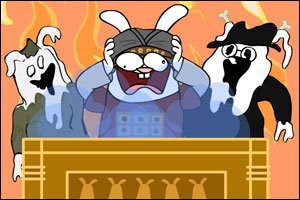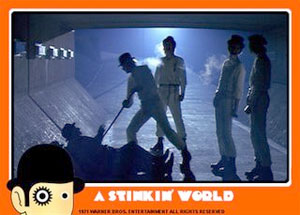 I remember the first debate I had over sampling. We were driving into the city in the back of a beat-up, covered pickup truck we had cleverly dubbed “The Urban Assault Vehicle,” drinking half Coke-half Southern Comfort in large McDonald’s cups, while yelling along to the Beastie Boys Licensed to Ill.
I remember the first debate I had over sampling. We were driving into the city in the back of a beat-up, covered pickup truck we had cleverly dubbed “The Urban Assault Vehicle,” drinking half Coke-half Southern Comfort in large McDonald’s cups, while yelling along to the Beastie Boys Licensed to Ill.My friend, a classic rock purist who only listened to bands who were either broken up or dead, thought the boys were talentless hacks for use of Led Zeppelin riffs. I think I responed: "Are not!" Being small town boys this was our first introduction to sampling – we had no idea of what was to come. I haven’t been a huge hip-hop fan but I’ve always been intrigued with how different pieces of music can be combined, adding up to more than the sum of their parts.
Rap was hardly the first style to mix genres together – what is The Simpsons if not a sampling of the best of movie and television pop culture – but I think it laid down the ethos that have made mashups legitimate. These days they are everywhere and not just in music. Digital files have put all of our recent pop history into the hands of ingenious artists – and I do think it is art – who are making hilarious tributes to the movies, music and TV they grew up with.
 As a Canadian I often feel that I’m obliged to bow down before the Group of Seven and give praise to the capital A, Art, and while it is lovely and all, I’d far rather go and see Toronto artist Les Paterson’s recreation of all of Marge Simpson’s paintings. And are the 30-Second Bunnies Theatre movie parodies any less clever than any other animated short? Speaking of which, check out Raiders of the Lost Ark (In 30 Seconds and Re-enacted by Bunnies). How about some kids bubblegum cards for the ultra-violent Clockwork Orange? Collect all the Droogs!
As a Canadian I often feel that I’m obliged to bow down before the Group of Seven and give praise to the capital A, Art, and while it is lovely and all, I’d far rather go and see Toronto artist Les Paterson’s recreation of all of Marge Simpson’s paintings. And are the 30-Second Bunnies Theatre movie parodies any less clever than any other animated short? Speaking of which, check out Raiders of the Lost Ark (In 30 Seconds and Re-enacted by Bunnies). How about some kids bubblegum cards for the ultra-violent Clockwork Orange? Collect all the Droogs!Pop culture is a term that always seems to be used disparagingly and with a sneer, as if everything created under the term is an ephemeral piece of trash not worth being remembered or lauded. I, of course, disagree. This is all part of our cultural heritage and that’s why I embrace this re-imagining of pop icons. I came across one of the best examples of this the other day on Bubblegumfink’s site in the form of the Vader Sessions which takes audio clips of James Earl Jones films and lays them over scenes from Star Wars, making the film seem that it was not only shot in the ‘70s, but took place then too. “Torn by good & evil and an incestuous love affair, a lonely and depraved Darth Vader has a nervous breakdown.” The non sequiturs are brilliant!










I suppose that my definition of pop cutlure is unusually broad. I tend to define pop culture as any particular book, play, movie, song, what have you that is popular. That is, a good number of people in the population actually have a chance of recognising it. Quite simply, then, The Simpsons are a part of pop culture, but then so are Shakespeare's plays. (-:
ReplyDeleteBy defenition that is true, but there are those that would see the Shakespeare play as high culture and The Simpsons as low, even though The Simpsons draws on the plays as much as current TV shows. I see them as existing along the same continuum - you will get more out of the latter if you understand the former.
ReplyDeleteI want the Clockwork Orange trading cards!!!
ReplyDeleteShakespeare was low comedy in it's day, so perhaps Simpson's is the Shakespeare of the future!
If The Simpson is added to the cannon and studied like Shakespeare, students will begin to begrudge it as well. Can you imagine CliffsNotes for Simpsons episodes?
ReplyDeleteWell, when they are part of the canon, a lot of the references aren't going to make sense to those students, so they are going to need the help.
ReplyDelete*I feel like Chicken tonight, like chicken tonight*
Oops, I did use the wrong canon, didn't I? Anyway, I think the parsing of cultural references would one of the interesting things about studying the Simpsons. The show improves as you consume more TV, movies, books and any other pop artifacts.
ReplyDelete